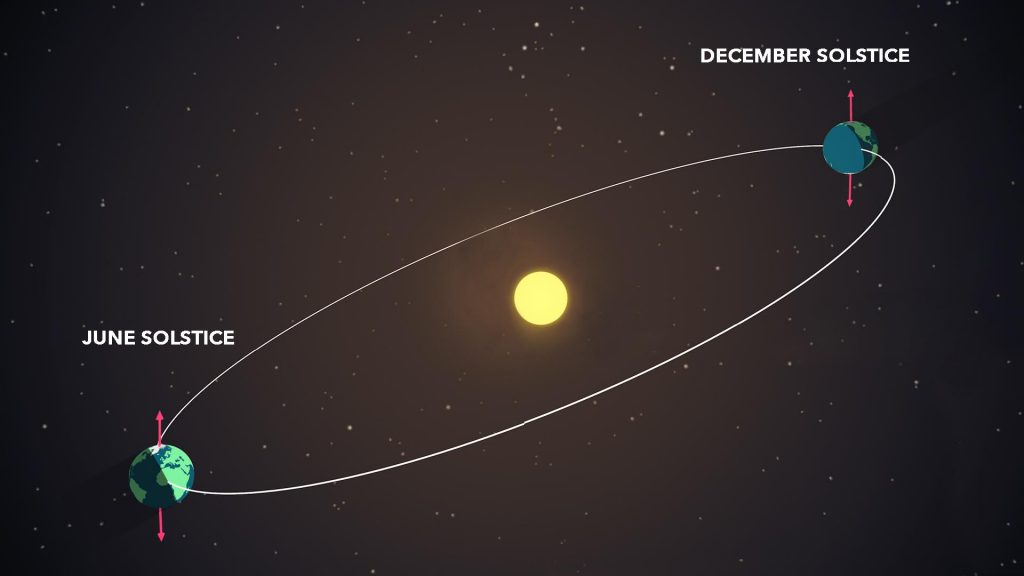The June solstice gives us the green light to welcome the summer season in the Northern Hemisphere and winter season in the Southern Hemisphere. This happens June 21, 2021, at 03:32 UTC, but for us in North America, that’s June 20 at 10:32 p.m. CDT (UTC-5).
In meteorology, summer begins on June 1. Yet, June 21 is perhaps the most widely recognized day when summer starts in the northern half of our planet and winter starts in the southern half. This astronomical beginning of the summer season and long-held, universal tradition of celebrating the solstice have allowed us to treasure this time of warmth and light.

Along with marking the beginning of summer, this will also be the longest day of the year in the Northern Hemisphere. We will begin to see early dawns, long days, late sunsets, and short nights. On the solstice, our Sun will reach its highest point as it crosses the sky. Meanwhile, south of the equator, winter will begin!
The ancient cultures knew that the Sun’s path across the sky, length of daylight, and location of the sunrise and sunset all shifted in a regular way throughout the year. Additionally, people built monuments, like Stonehenge, to follow the Sun’s annual progress, to worship the Sun, and to predict its movements.

Today, we celebrate the solstice as an astronomical event caused by Earth’s tilt on its axis and its motion in orbit around the Sun.
Earth’s axis may be imagined as an imaginary pole going right through the center of our planet from “top” to “bottom.” Earth spins around this pole, making one complete turn each day. That is why we have day and night, and why every part of Earth’s surface gets some of each.
Earth doesn’t orbit upright; its axis is always tilted 23.5˚ with respect to the Sun-Earth line, which is why we have seasons. During the June solstice compared to any other time of the year, the north pole is tipped more directly toward the Sun, and the south pole is tipped more directly away from the Sun. As a result, all locations north of the equator see days longer than 12 hours and all locations south see days shorter than 12 hours.
Enjoy the new season – whichever half of the globe you’re in!
by Lance D. Davis
